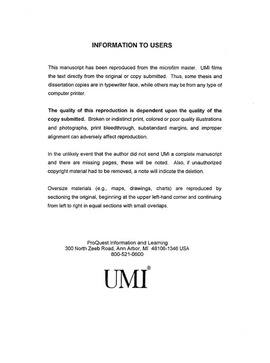| dc.contributor.advisor | Miller, Gerald A., | en_US |
| dc.contributor.author | Freyne, Seamus Francis. | en_US |
| dc.date.accessioned | 2013-08-16T12:18:52Z | |
| dc.date.available | 2013-08-16T12:18:52Z | |
| dc.date.issued | 2003 | en_US |
| dc.identifier.uri | https://hdl.handle.net/11244/557 | |
| dc.description.abstract | It was learned that all cements and aggregates in the test group appear suitable for producing HPC, but some cements and aggregates are better in precast/prestressed concrete applications. Cement selection is crucial to early strength gain while the choice of coarse aggregate is more important for ultimate strength development. The w/cm is a useful statistics for today's increasingly complex HPC mixtures. Heat curing was damaging to ultimate strength potential and, in some HPC mixtures, even failed to accelerate early strength gain relative to standard curing. Also, difficulties with reproducibility can be encountered when trying to advance HPC technology from the laboratory to commercial manufacture. | en_US |
| dc.description.abstract | High performance concrete (HPC) is becoming the building material of choice for many different applications. By definition, HPC is concrete meeting specific performance requirements that cannot always be achieved using conventional constituent materials and normal mixing, placing and curing practices. HPC must be developed at the local level, given the uniqueness of local constituents and the economic practicality of employing many of these local constituents. Today there are a wide variety of cements, supplementary cementitious materials, aggregates, and admixtures in use. | en_US |
| dc.description.abstract | One likely application of HPC is in precast/prestressed concrete bridges. The objective of this research was to confirm the advantages of HPC for Oklahoma and, in the process, to advance the field of HPC in general. | en_US |
| dc.description.abstract | The research involved identifying locally available cements and aggregates suitable for producing HPC, developing HPC mixture proportions for precast/prestressed bridge beams and, finally, demonstrating HPC at a precast/prestressed concrete plant in Oklahoma. The test group included eight cements and four coarse aggregates. Variables examined in developing HPC mixtures included water/cementitious materials (w/cm) ratio, supplementary cementitious materials, and cementitious material content. Additionally, heat curing was evaluated in parallel with standard curing. Criteria for comparing HPC mixtures included workability, compressive strength, splitting tensile strength, and modulus of elasticity. Several HPC mixtures, distinguished as having adequate workability and potential to achieve compressive strength of 60 MPa (8,700 psi) at 1 day and 100 MPa (14,500 psi) by 28 or 56 days, were selected for trial at a precast/prestressed concrete plant. | en_US |
| dc.format.extent | xiv, 398 leaves : | en_US |
| dc.subject | Precast concrete Oklahoma. | en_US |
| dc.subject | Concrete bridges Oklahoma. | en_US |
| dc.subject | High strength concrete Oklahoma. | en_US |
| dc.subject | Engineering, Civil. | en_US |
| dc.subject | Prestressed concrete beams Oklahoma. | en_US |
| dc.title | High performance concrete in Oklahoma designed for precast/prestressed bridge beams. | en_US |
| dc.type | Thesis | en_US |
| dc.thesis.degree | Ph.D. | en_US |
| dc.thesis.degreeDiscipline | School of Civil Engineering and Environmental Science | en_US |
| dc.note | Adviser: Gerald A. Miller. | en_US |
| dc.note | Source: Dissertation Abstracts International, Volume: 64-01, Section: B, page: 0321. | en_US |
| ou.identifier | (UMI)AAI3077423 | en_US |
| ou.group | College of Engineering::School of Civil Engineering and Environmental Science | |
